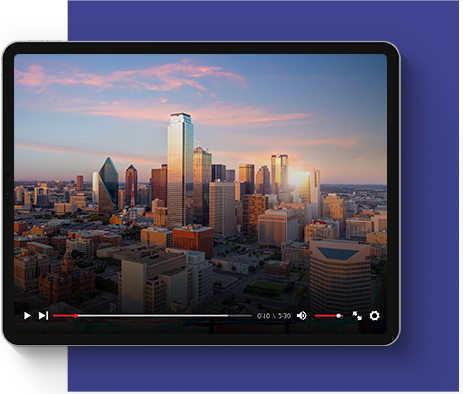WalkMe Trends
During the height of COVID-19, WalkMe reached out to employees from different industries, sectors, and positions to understand how they were coping with the new working from home reality.

We asked our LinkedIn community: How are organizations keeping employees engaged and productive digitally while working from home?
We compiled these insights into a report that analyzes the different trends we collected and their impact today.
WFH Insights Report
During the height of COVID-19, WalkMe reached out to employees from different industries, sectors, and positions to understand how they were coping with the new working from home reality.

We asked our LinkedIn community: How are organizations keeping employees engaged and productive digitally while working from home?
We compiled these insights into a report that analyzes the different trends we collected and their impact today.
95%
of people shared their top digital communication tools.
Digital communication tools increased as remote work became more prevalent. Whereas teams might have had some level of familiarity and proficiency on existing tools and systems before, COVID-19 catapulted employees to becoming more digitally dexterous. The move to digital communication tools creates more opportunities for improved communication, reporting, and transparency.


Almost 70%
said that they were occupied with video meetings.
At the beginning of 2020, video conferencing grew by 87%. Meetings and team collaborations quickly became virtual as COVID-19 forced companies to keep their employees at home. Zoom, in particular, saw a sharp increase, growing from 10 million daily meeting participants in December to more than 200 million in March.
44%
of teams connected over virtual non-work related activities like games, movie nights, and video water cooler hangouts.
The desire to connect with others increased as people were social distancing. 34% of Americans said they socialized more with co-workers than they did before the COVID-19 pandemic. Employees who previously avoided social gatherings at the office were more inclined to connect with colleagues from a safe distance and forge more interactions.


29%
cited WalkMe specifically in helping their organization WFH.
WalkMe’s digital adoption platform featuring in-app guidance, automation, and insights supported companies making the transition to remote work. Many were able to increase their training and onboarding as well as streamline communications to their remote workforce and customer base. For example, when using complex software, a WalkMe survey found that there was a +217% growth in engagement with WalkMe content for customers using CRM platforms.

For more insightful content from thought leadership to analysts reports, please visit our resource center here:
19%
said executive leadership teams stepped up and played a big role in helping ease the shift to working remotely.
The respondents cited weekly calls or emails initiated by the executive leadership team to share updates or to simply check-in. When leaders show transparency and consistently demonstrate their vested interest in the well-being of their employees, they demonstrate the four universal needs identified by Gallup research: trust, compassion, stability, and hope.


18%
of respondents mentioned health
and wellness initiatives
of respondents mentioned health and wellness initiatives
Companies became more concerned with the mental health and wellness of their workforce and sought ways to ease employees through this disruptive period. Starbucks offered employees and their family members access to 20 sessions a year with a mental health therapist or coach through the provider Lyra Health. PwC gave employees the option of well-being coaching sessions, in addition to creating an online community for workers to connect with one another and share challenges presented by COVID-19.
WFH isn’t new for everyone.
11%
responded that their companies already had work from home policies in place before COVID-19.
According to the World Economic Forum, pre-pandemic, only 22% of organizations were ready for mass remote working prior to the outbreak. Companies that already had work from home policies or flexible workspace measures had an easier time transitioning to remote work.


As companies adjust to remote work, a post-pandemic world is closer in sight. The next phase we are entering is the Next Normal and will see companies tackle new challenges ahead.
Empower your employees anytime, anywhere
* By clicking the button, you agree to the Terms and Conditions. Click Here to Read WalkMe's Privacy Policy